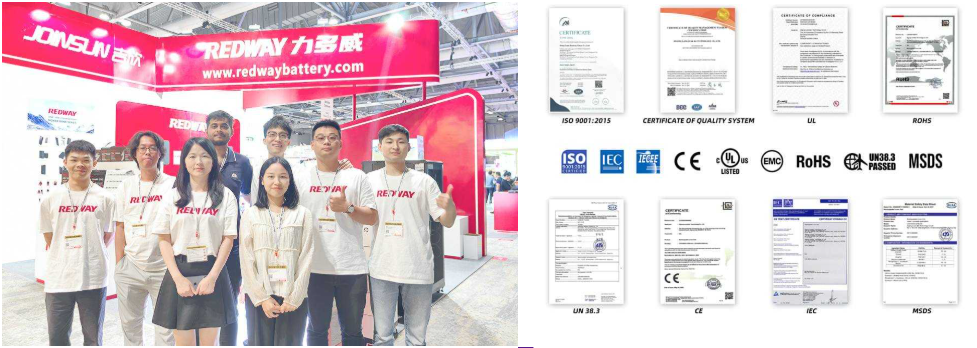To safely install LiFePO4 batteries in your RV, follow essential precautions such as ensuring proper wiring, using appropriate safety gear, and selecting a suitable installation location. Understanding the safety features of these batteries can further enhance your installation process, ensuring reliable power without compromising safety.
What Are Pre-Installation Safety Measures?
Before installing LiFePO4 batteries in your RV, it’s crucial to take specific pre-installation safety measures. These include reading the manufacturer’s manual thoroughly, hiring a qualified installer if necessary, and ensuring that the installation area is well-ventilated. Proper preparation helps mitigate risks associated with battery installation.Chart: Pre-Installation Safety Measures
| Measure | Description |
|---|---|
| Read Manufacturer’s Manual | Understand specific requirements and guidelines. |
| Hire Qualified Installer | Ensure correct installation practices are followed. |
| Ensure Ventilation | Prevent heat buildup during operation. |
How Do You Ensure Proper Wiring and Connections?
Proper wiring and connections are vital for safe battery operation. Confirm polarity before connecting terminals, use appropriately sized cables, and avoid sharp edges that could damage insulation. Following the manufacturer’s wiring instructions precisely minimizes risks of short circuits or performance issues.Chart: Proper Wiring Guidelines
Wholesale lithium golf cart batteries with 10-year life? Check here.
| Guideline | Description |
|---|---|
| Confirm Polarity | Verify positive (red) and negative (black) connections. |
| Use Correct Cable Size | Match cable size with current requirements to prevent overheating. |
| Avoid Sharp Edges | Route cables away from potential damage points. |
What Safety Gear Should Be Used During Installation?
Using appropriate safety gear during installation is essential to protect against potential hazards. Installers should wear gloves, safety glasses, and protective clothing to safeguard against electrical shocks or accidental battery leaks. This precaution ensures a safer working environment.
Why Is Location Consideration Important?
Choosing an appropriate location for battery installation is critical for safety. The area should be well-ventilated to dissipate heat generated during charging and discharging. Additionally, avoid placing batteries near flammable materials or sources of heat to minimize fire risks.Chart: Ideal Battery Installation Locations
Want OEM lithium forklift batteries at wholesale prices? Check here.
| Location Factor | Description |
|---|---|
| Ventilation | Ensure airflow to prevent overheating. |
| Distance from Flammable Materials | Maintain a safe distance from potential fire hazards. |
| Accessibility | Choose a location that allows easy access for maintenance. |
What Are the Key Safety Features of LiFePO4 Batteries?
LiFePO4 batteries come equipped with several safety features that enhance their reliability during use. These include thermal stability, reduced risk of thermal runaway, built-in protection against overcharging, and robust chemical stability that minimizes hazards associated with overheating or short circuits.
Know More:
How Do You Install LiFePO4 Batteries in an RV?
How Can You Properly Install a LiFePO4 Battery in Your RV?
How Can You Safely Install LiFePO4 Batteries in Your RV?
How Can You Optimize Space When Installing Multiple Batteries in RVs?
How to Prevent Overcharging and Short Circuits?
Preventing overcharging involves using a quality Battery Management System (BMS) that monitors voltage levels and disconnects the battery when necessary. Additionally, ensure all connections are secure to avoid short circuits, which can lead to battery failure or hazardous situations.Chart: Overcharging Prevention Techniques
| Technique | Description |
|---|---|
| Use a BMS | Monitor battery conditions continuously. |
| Secure Connections | Regularly check for loose or damaged connections. |
What Maintenance Practices Enhance Battery Safety?
Regular maintenance practices such as inspecting connections for corrosion, monitoring charge levels, and ensuring proper ventilation can significantly enhance battery safety. Keeping detailed records of performance can help identify potential issues early, allowing for timely interventions.
How Do Environmental Conditions Affect Battery Installation?
Environmental conditions such as temperature extremes can impact battery performance significantly. Installing batteries in areas prone to extreme heat or cold may lead to reduced efficiency or increased risk of failure. Proper insulation and climate control measures should be considered during installation.
What Training Is Recommended for DIY Installers?
For those considering DIY installation of LiFePO4 batteries in their RVs, training on electrical systems and battery technology is highly recommended. Understanding basic electrical principles, safety protocols, and manufacturer guidelines can help ensure a successful installation while minimizing risks.
Expert Views
“Proper installation practices are crucial when working with LiFePO4 batteries in RVs,” says an expert from Redway. “Understanding safety features like thermal stability and using adequate protective gear can significantly reduce risks during installation.”
Conclusion
Installing LiFePO4 batteries in your RV requires careful attention to safety precautions such as proper wiring, location considerations, and understanding the inherent safety features of these batteries. By following best practices and maintaining awareness of environmental factors, you can ensure a safe and efficient power solution for your RV.
FAQ Section
- What are the main safety precautions when installing LiFePO4 batteries in an RV?
Key precautions include ensuring proper wiring connections, using appropriate safety gear, choosing a well-ventilated installation location, and following manufacturer guidelines closely. - How do I prevent overcharging my LiFePO4 batteries?
Utilize a quality Battery Management System (BMS) that monitors voltage levels continuously and disconnects the battery when necessary to prevent overcharging. - Why is location important when installing RV batteries?
The installation location should be well-ventilated to dissipate heat generated during operation while being away from flammable materials to minimize fire hazards.





